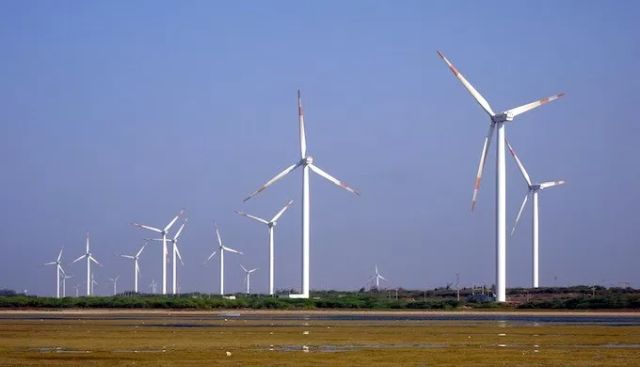
by Editor | May 25, 2021 | Corporate Jobs, Employment, Government Jobs, News, Private Jobs
 Mumbai : Nearly 150,000 direct and indirect jobs in India’s debt-ridden and loss-making telecom sector face “clear and present danger” of corporate downsizing, as per estimates by industry sources.
Mumbai : Nearly 150,000 direct and indirect jobs in India’s debt-ridden and loss-making telecom sector face “clear and present danger” of corporate downsizing, as per estimates by industry sources.
At present, the sector is burdened with astronomical debt — to the tune of nearly Rs 8 lakh crore by some estimates — and heavy losses due to a slew of freebies which are being doled out by incumbent telecom players to retain their customer base.
The grim reality that the sector faces can be gauged by the comments made by Communications Minister Manoj Sinha at the recently held India Mobile Congress: “The government is aware of the stress in the sector… earlier also we have intervened, and if needed we will do so again.”
“We will make sure that the sector does not die,” said the minister.
In April, the Reserve Bank of India (RBI) had also cautioned commercial banks about loans given to companies in the telecom sector.
“The telecom sector is reporting stressed financial conditions, and presently interest coverage ratio for the sector is less than one,” the RBI note had said.
According to industry observers, telecom companies have no option left but to initiate “severe cost-cutting” measures — including downsizing — to sustain operations.
Facing the axe are between 20,000-25,000 direct jobs, many of which will be due to planned mergers between incumbent players. Mergers alone will lead to over 15,000 job losses as existing portfolios and profiles are duplicated.
As per industry sources, major player Idea Cellular has axed around 1,800 jobs in the lead-up to its planned merger with Vodafone. A further reduction of 5,000-6,000 employees is on the cards as and when the merger fructifies, perhaps next March.
On the other hand, Vodafone has laid-off 1,400 people from its side as part of the merger plans with Idea, the sources said.
Although industry sources pointed towards job losses in telecom major Bharti Airtel, the company has denied the same.
Reliance Communications has also laid off some 1,200 people over the last year in the lead-up to the merger with Sistema and its now-called-off merger with Aircel, which, too, is learnt to have let go of 800 employees, estimates show.
However, industry estimates place a far larger number of around 125,000 indirect jobs that will be wiped out due to the turbulence being faced by the sector.
“In the larger scheme of things, with the economy slowing down and most industry sectors seeing flat or negative growth, the impact is going to be ‘telling and bloody’, with jobs not being created across sectors, and re-employment becoming a tough task,” an industry analyst told IANS.
Besides the sector, the Union government, which has come under criticism from various quarters for slow economic growth and lower-than-expected job creation, will also find it hard to provide substantial alternative opportunities to the unemployed.
Till some time back, the sector was amongst the top five largest employment opportunity generators in the country. It supported direct employment of over 20 lakh in the country during 2015-16.
“As per some estimates, the mobile industry in India currently contributes 6.5 per cent ($140 billion) to the country’s GDP, and employs over four million people (direct and indirect),” said the Annual Report 2016-17 of the Department of Telecommunications.
—IANS

by Editor | May 25, 2021 | Business, Corporate, Corporate Governance, Economy, Employment, Large Enterprise, News, Politics
 By Arul Louis,
By Arul Louis,
United Nations : The threat to jobs from automation was overstated and “robophobia” should not deter countries from adopting a manufacturing and exports based strategy for rapid economic growth, according former Niti Aayog vice chairperson, Arvind Panagariya.
“One should not freeze in to inaction on account of ‘robophobia’ from following the path of manufacturing and exports that had led some of the Asian countries out of poverty,” Panagariya said on Monday while addressing the UN General Assembly’s committee on economic and financial issues.
“Countries easily have a 15-year window to pursue manufacturing and exports based strategy.”
The technologies have to be invented or developed and then they have to commercialised before robots can replace workers, he said.
Panagariya, who left the Niti Aayog late August and was now back at the Columbia University where he is the professor of economics holding the Jagdish N. Bhagwati chair of Indian Political Economy.
Fresh from a 32-month stint helping develop economic policies and direction for India, he was invited by the General Assembly committee to deliver the keynote address on “Road to Rapid Economic Transformation” at its inaugural meeting of the current session.
“Rapid economic growth held the key to elimination of poverty by both raising incomes and increasing the resources available to governments for investing in social programmes.
“Today there is scepticism about whether countries can repeat the performances of countries like South Korea and Taiwan by following their models of growth because of fears of automation and growing protectionism in the industrialised countries.
“We overstate because we can see what jobs automation will destroy (but) we cannot see what jobs automation will actually create. I draw on the history… No automation of the past has actually cut jobs. It has made us only busier and busier,” the former vice chairperson added.
While there were adjustments to be made in the short term, medium to long-run automation made the “labour market more intense,” he said.
There were some areas like making clothes or some technology manufacturing where robots cannot do the work of human beings and these were in labour-intensive sectors that have an important role in the early phase of high growth, Panagariya said.
As for fears of protectionism, he said that what matters to most countries is whether they can “capture a slightly larger piece of the gigantic world exports pie” than the changes to its size.
“The global market in merchandise and services exports is about $22 trillion and whether it expands to $25 trillion or shrinks to $20 trillion in the next five to seven years matters less compared to growing their share of the market by countries.”
For example, it was more important for India has to work on growing its share of the global market from the current 1.7 per cent to 5 to 7 per cent, he added.
In pursuing the UN goals of sustainable development, according to Panagariya, income redistribution alone would not go far in alleviating poverty without economic growth.
Only five countries — Japan, South Korea, Taiwan, Singapore. China — have grown at rates of 8 to 10 per cent over two decades and were able to rapidly transform themselves from traditional to modern societies practically eliminating poverty, he said.
“They were able to achieve in two or three decades what had taken the western industrialised nations a century.”
India seems to be the sixth country to be on that kind of a growth path, having grown at an average rate of 7.8 per cent over the last 14 to 15 years.
Although economists tend to underplay the role of leadership, it is the key factor in helping countries achieve high growth, he added.
(Arul Louis can be reached at arul.l@ians.in)
—IANS

by Editor | May 25, 2021 | Corporate, Corporate Buzz, Employment, Opinions
 By Sapna Gopal,
By Sapna Gopal,
In the past couple of years, the wind energy industry in India has impressed with its stellar performance. The country had an installed wind power capacity of 32.28GW at the end of March 2017. It exceeded a target of 4GW by installing 5.4GW in 2016-17 and 3.423GW in 2015-16. By March 2017, India achieved 53 per cent of its wind energy targets for 2022, with 32.3GW capacity installed.
This growth was owing to supportive policies, including updated guidelines for the development of wind power projects and the introduction of competitive tariff bidding in wind energy auctions, according to an analysis by the World Resources Institute (WRI). In fact, India had the fourth-largest wind capacity in the world after China, the US and Germany.
However, the dream run has stalled a bit, say industry experts. They cite issues where the state electricity distribution companies (discoms) have stopped signing power purchase agreements (PPAs) for projects agreed upon earlier when tariffs were higher (Rs 4 to Rs 6) per kilowatt hour and now have come down to Rs 3.46 ($0.05). Apart from the fact that the business has not been as good as it was earlier, some concern was also raised following the decision of some wind energy companies to lay off a percentage of their employees. However, experts say this is only a temporary phase.
Last year, the government came up with a proposal to set up 1GW of wind power for state transmission that would have helped states to meet their Renewable Purchase Obligations and enable transmission of energy from one state to another, according to an official at the Ministry of New and Renewable Energy (MNRE). It was decided that the tariff would be Rs 3.46.
“Most of the wind energy in the FIT (Feed in Tariff) range is more than that in all the states. As a result, the states have decided not to go in for FIT regime and they are gearing up for competitive bidding in the wind energy sector also,” the official told indiaclimatedialogue.net. “Since this process has begun, it will take time, about one-and-a-half years, to stabilise it entirely. Meanwhile, the Indian government has plans to go for another bid, of 1,000 MW for all the states this financial year.”
Those from states such as Tamil Nadu and Karnataka, where the winds are strong, have bid for Rs 3.46. If this kind of bidding is done in Madhya Pradesh, Rajasthan or Maharashtra, where wind speeds are not good, this tariff will not be available. This has become counter-productive and tentatively stopped the process of bidding in the states. Some have decided to come up with a bid again for wind. So… this has resulted in slowing down of wind deployment for a while, the official explained.
“India’s wind sector is transitioning from a FIT regime to tariff-based competitive auctions,” another expert said. “While feed-in tariffs ensure a fixed price for wind power producers, wind power tariffs in hit a record low of INR 3.46 per kilowatt hour (kWh) in a February auction conducted by Solar Energy Corporation of India (SECI).”
The bid-based mechanism, the expert added, has had a successful round where 1GW was bid out by SECI earlier this year. “Hence, the overall uptrend augurs well for employment opportunities, though the incremental jobs might fall short of expectations; but I see no reason for a downward trend in employment potential for wind sector,” the source added.
“We have moved to the bidding – three-four months for the process and 18 months for the installation – so, practically, a period of 21 months. Earlier, it was on feed-in-tariff, a continuous process. Now, because of this transition from FIT to bid, there may not be any capacity addition this year and maybe the next year also, so that is the only reason. We are coming out with many other bids,” the ministry official said. “As a result, I believe it is just a temporary phase.”
Sunil Jain, CEO and Executive Director of Hero Future Energies, believes that this is only a temporary phase and even though there will be a turbulent period of around 12 months, from mid-2018-19, the results will be positive. “Since we are moving from FIT to bidding, this change is bound to cause issues; but there is nothing to be overly concerned as it is only transitory,” he said.
Concurring, D. Giri, Secretary General of Indian Wind Turbine Manufacturers Association (IWTMA) is of the opinion that the current trend of layoffs in the sector is temporary and will soon pave way for far better times. While he admits that, owing to the transition, the next two years will be challenging, the period after that would witness the sector achieving great heights.
“This financial year will be a challenge, not the next one, since things have begun moving in the right direction and a lot of issues will be resolved,” the MNRE official said. “We will lose deployment for the next six months, but at the end of the day, it will move. So, it is not a cause to be overly concerned.”
(In arrangement with indiaclimatedialogue.net. Views expressed are those of the web site. Feedback at information@ indiaclimatedialogue.net)
—IANS

by Editor | May 25, 2021 | Corporate Jobs, Employment, Markets, Online Marketing, Private Jobs
 New Delhi : E-commerce giant Amazon India on Monday said it has created over 22,000 seasonal job positions across its network in the country during the upcoming festive season.
New Delhi : E-commerce giant Amazon India on Monday said it has created over 22,000 seasonal job positions across its network in the country during the upcoming festive season.
According to the company, the additional positions have been created at its fulfillment centres, sorting centres, delivery stations and customer service sites in Mumbai, Delhi, Hyderabad, Chennai, Bengaluru, Ahmedabad and many other cities across the country.
“This enhancement will be instrumental in driving an exceptional experience during the upcoming Great Indian Festive Sale. The over 22,000 seasonal associates will help in augmenting our capabilities to serve our customers better and enable us to deliver consistently high levels of customer experience,” said Akhil Saxena, Vice President – India Customer Fulfilment, Amazon India, in a statement.
The statement said associates who have been provided opportunities specifically for the festive season will join the thousands of associates at the company’s 41 fulfillment centres, 15 sorting centers and close to 150 delivery stations across the country.
Amazon has 13 customer service sites across 12 cities and provides voice support for customers in Kannada, English, Hindi, Tamil and Telugu, it added.
—IANS

by Editor | May 25, 2021 | Employment, News, Politics
 New Delhi, (IANS) The Congress on Saturday questioned the BJP-led NDA government for its “failure to create jobs” during its two-year rule and said that Narendra Modi-led government’s record in agriculture was dismal.
New Delhi, (IANS) The Congress on Saturday questioned the BJP-led NDA government for its “failure to create jobs” during its two-year rule and said that Narendra Modi-led government’s record in agriculture was dismal.
Senior Congress leader P. Chadambaram, in a press conference here on completion of two years of the National Democratic Alliance (NDA) government, said: “Growth was negative at -0.2 percent in 2014-15 and a meagre 1.1 percent in 2015-16.”
The government failed to anticipate and tackle the acute distress in rural India, he said.
“Where are the jobs? The most notable failure of the NDA government has been in job creation,” the Congress leader said.
“The ferment in universities can be partly attributed to the bleak future faced by university graduates. Besides, there are millions of young people who will complete no more than 8 or 10 years of school education and will have no special skills. Where are the jobs for them,” Chidambaram said.
He further said: “There is little to cheer in the GDP numbers. There is a growing dichotomy between the GDP numbers and the other economic indicators.
“If calculated under the methodology of the old series, the estimate for 2015-16 would be about 5 percent and not 7.6 percent. The average citizens need jobs and incomes. They do not consume GDP numbers,” he added.

 Mumbai : Nearly 150,000 direct and indirect jobs in India’s debt-ridden and loss-making telecom sector face “clear and present danger” of corporate downsizing, as per estimates by industry sources.
Mumbai : Nearly 150,000 direct and indirect jobs in India’s debt-ridden and loss-making telecom sector face “clear and present danger” of corporate downsizing, as per estimates by industry sources.



